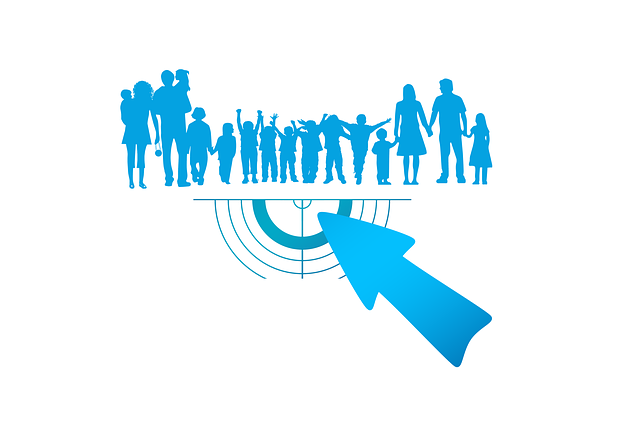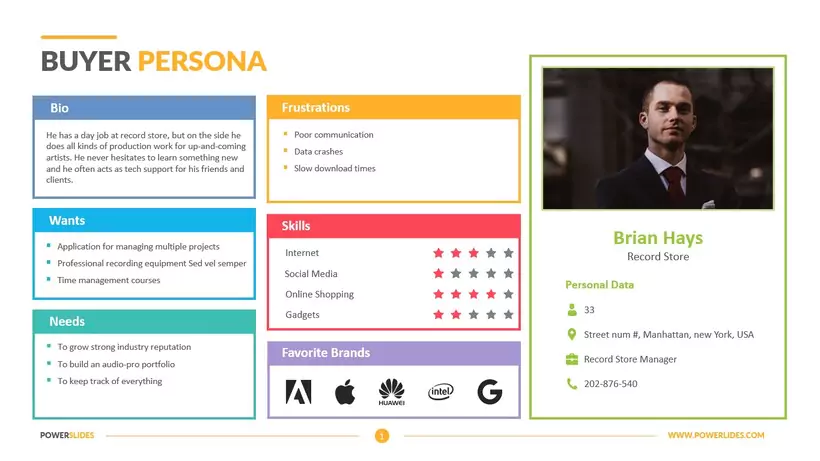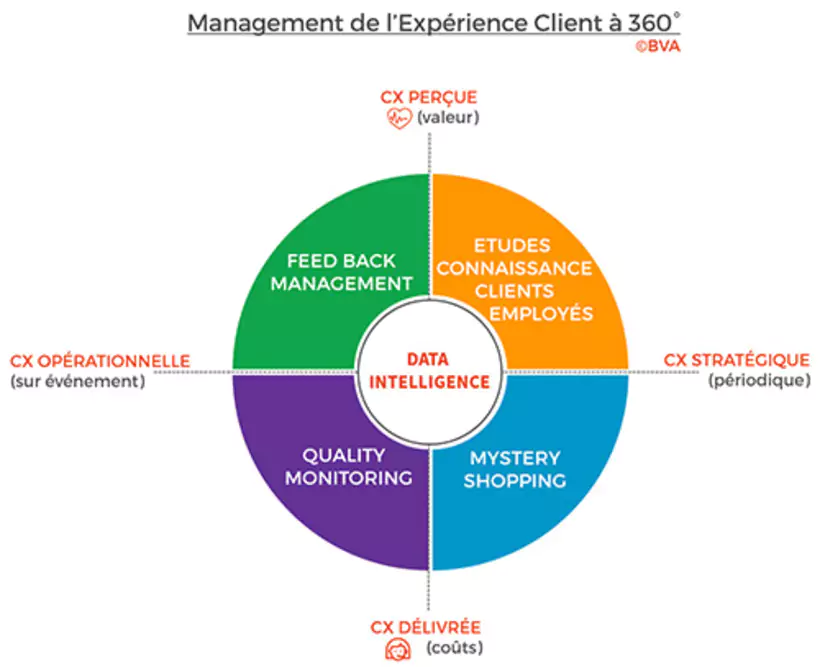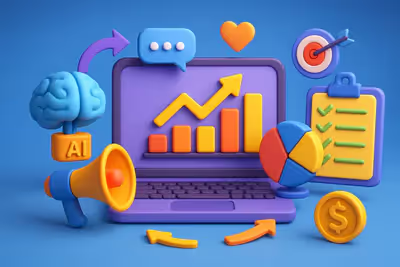Defining the target customer profile
What is a target customer profile?
Imagine a tool that acts as a compass for your business. The target customer profile is exactly that! This strategic document brings together the historical data of your customers to reveal their behaviors, needs and motivations. But what is a profile? It is a document that compiles historical customer data to better understand their behaviors and needs, and it is essential for effectively targeting customers and adapting marketing strategies.
A clear objective: it answers an essential question: “Who is my ideal customer?” ” By transforming raw data into a roadmap, it allows marketing professionals and entrepreneurs of target their audience main with unparalleled precision.

Why create a target customer profile?
Today, create a target customer profile is essential to remain competitive. That a customer profile is an essential tool for identifying and targeting appropriate customer groups, helping sales teams personalize their approach to increase sales. This tool immerses you in the world of your customers, revealing their hardships, interests, buying habits and motivations.
The 3 main reasons to adopt it:
- Personalization — Create experiences that capture the attention of your prospects.
- Optimization — Boost your marketing strategy for lasting results.
- Competitiveness — Get a head start on your competitors.
As one marketing expert says: “Without a target customer profile, you're browsing blindly. With it, you are charting a direct path to success.”
The main elements of a target customer profile
One target customer profile effective is based on varied data, organized to give you an overview. Here is a chart to explore them:
| Data Type | Examples | Utility |
|---|---|---|
| Demographic Data | Age, gender, income, occupation, education | Provides an overview and enables effective segmentation. |
| Behavioral Data | Pages visited, products purchased, interactions | Helps understand habits and anticipate needs. |
| Preference Data | Interests, values, beliefs | Allows personalization of offers and improves engagement. |
| Needs Data | Problems, goals, motivations | Helps propose tailored solutions and optimize conversion. |
| Geographic Data | Location, climate, culture, language | Adapts marketing campaigns to a local context. |
| Psychographic Data | Lifestyle, attitudes, aspirations | Sharpens brand positioning and communication. |
Why create a target customer profile: the keys to a winning strategy
Targeting and customizing your marketing
Les target customer profiles are a gold mine for marketers looking to refine their approach. By bringing together accurate information about the demographics, behaviors, preferences, and needs of your audience, you can tailor your campaigns with incredible precision. In 2026, target your audience in a personalized way is essential to transform your prospects into loyal customers. Your messages become more relevant, your offers more powerful, and your customer relationships stronger.
Quick example: An email campaign adjusted to the interests of a specific segment can double your open rates!

Guiding product development
One target customer profile is a powerful lever for innovation. By understanding the pain points, goals, and preferences of your customers, you can develop products and services that perfectly meet their expectations. Personalized service can improve the customer experience by facilitating collaboration between teams and ensuring a mutual understanding of consumer expectations.
3 steps to guide your innovations:
- Analyze the needs expressed by your customers.
- Identify gaps in your current offering.
- Create solutions that bridge these gaps.
Mini case study: A tech startup used a customer profile to launch an application Of management simplified, meeting the needs of overwhelmed entrepreneurs, and saw its sales increase by 30% in six months.

Improving customer acquisition and retention
Thanks to a thorough knowledge of the characteristics and behaviors of your audience, a target customer profile transform your acquisition and loyalty strategies. You attract the right prospects and convert them into loyal customers.
What the experts say:
“A well-defined customer profile can increase your conversion rates by 20% by targeting the right people at the right time.” — Expert in digital marketing.
By integrating these insights into your marketing strategy, you maximize the impact of each euro invested, while strengthening the loyalty of your customers.

Types of customer profiles
| Profile Type | Description | Segmentation Criteria |
|---|---|---|
| Demographic | Classifies clients based on their identity, providing an overview of who they are. | Age, gender, marital status, ethnicity, income, occupation, education. |
| Psychographic | Explores why your clients buy, focusing on their deep motivations. | Personality traits, attitude, opinions, values, beliefs, lifestyle, religion, political affiliation. |
| Behavioral | Analyzes how your clients interact with your brand and their habits. | Purchase patterns, spending habits, brand interactions, product or service usage. |
| Geographic | Segments clients based on their location and purchasing places, enabling a localized approach. | Physical location, language, culture, workplace. |
Why is it useful? Businesses can use these profiles for different customer segments, refining their marketing strategy and targeting their audience accurately.
How to create an effective customer profile: a practical guide
Create a effective customer profile shouldn't be a never-ending chore. It is a strategic tool to get to know your customers better, anticipate their needs and boost your results. Whether you are a marketing pro, an entrepreneur or a salesperson, this guide will give you concrete tips to get there without drowning in the details. Here's how to do it, step by step.
Use customer profile templates
Starting a customer profile from scratch is like reinventing the wheel every time — time-consuming and not necessarily smart. Les customer profile templates are there to save the day. They offer a ready-to-use structure where you can enter key information: age, job, buying habits, preferences... In short, everything that matters. In addition, ideal customer profile (PCI) scorecards allow potential customers to be evaluated using a scoring system, making it easier to segment and target ideal customers.
Why is it worth it?
- Rapidity : You fill, and presto, it's folded in two steps three movements.
- Clarity : All your profiles have the same look, easy to compare.
- Scalability : Are customers changing? You adjust without redoing everything.
- Simplicity : Even a novice can get started without panicking.
But be careful: not all models Se not worth it. Some free ones are too basic and leave you wanting more. Test several of them (like those from HubSpot or Canva) to see what fits your style and the quality you want. In the end, it's a gain in efficiency that gives you more time to analyze rather than fiddle around.

Identify customer problems and solutions
A good customer profile is not just an identity card. It is also a map of the difficulties of your customers and the solutions that you can provide them. Without this step, you may miss out on what really motivates them.
To identify these needs, there is no mystery: you have to dig. Do quick surveys (Google Forms does the trick), read the reviews on your platforms, or delve into the complaints received by your customer support. Web analysis tools, such as Google Analytics, can also show where your users are blocking.
Concrete example: If your customers are complaining about delivery times, don't just shrug your shoulders. Offer an express option — even if it costs a bit more, it can mean the difference between cart abandonment and a sale. It is by transforming these pitfalls into assets that you will score points.

Gather and analyze customer feedback
Feedback from your customers, It's gold in the bar to refine your profiles. Not just the “great, thank you” or the “sucks, to review”, but anything that gives you clues about their real expectations.
You can go Look for this feedback via simple questionnaires (avoid the 20-question blocks, no one has time), check the conversations on twitter or Instagram, or even dive into the data of your CRM. The idea is to catch what they're saying — and what they're not saying.
Once you have all that, don't let the news sleep. Cross them with your existing profiles to make them more specific. If your customers want video tutorials, for example, don't just nod your head: add that to your strategy. It shows that you're listening, and it pays off.
The role of the customer profile in commercial strategy
A well-designed customer profile is your compass for commercial strategy Who is rattling. Without it, you're shooting in the void. With, you align your campaigns, messages, and offers with what your customers really want.
The big pluses?
- Precise targeting : You're talking directly to the right people, not at random.
- Relevance : Your offers are exactly what they need, no useless blah.
- Effectiveness : Less wasted budget, more results.
- Connection : Customers feel understood, and that keeps them coming back.
An expert I read recently said: “A customer profile is like a GPS: without it, you go in circles.” And frankly, he's right. Take the time to work on it, and you will see the impact on your sales.

Create a buyer persona
Go from customer profile to Buyer Persona, it's like giving your data a face. It makes everything more concrete for your teams. No more cold stats, hello Sophie, 35, a solo mom who has a hard time finding affordable organic products.
To build it, start from real data: age, location, motivations, obstacles to buying. Then add their challenges (e.g., “no time to compare”) and their habits (e.g., “scroll on Insta at night”). Give it a name, a story — it helps to remember it.
But beware of the cliches! Basing your persona on assumptions rather than facts is the best way to aim the side. Rely on your analytics and feedback, not on your imagination.

Use social media to understand the target audience
Social networks are a mine of real-time information about your customers. What they like, share, or criticize tells you everything about their tastes and moods.
Some smart tools:
- Facebook Audience Insights : To see who is interested in what.
- /Twitter Analytics : To capture hot topics.
- LinkedIn Sales Navigator : Top for B2B pros.
If you see that your subscribers like posts about sustainability, for example, put that into your campaigns. But don't limit yourself to a single network — each platform has its own vibe, and so do your customers.

The advantages of a good customer profile
A solid customer profile is a game changer. It's not just about getting to know your customers better — it boosts your entire strategy.
Imagine: messages that hit the nail on the head, a smooth user experience because you know what they want, and ads that convert without draining your budget. All because you have taken the time to understand who they really are. And the bonus? Customers who come back, because they finally feel listened to.
How to use customer profile data to personalize experiences
Customer profile data is a gold mine for personalizing experiences and meeting the specific expectations of your audience. Here's how you can use this data to deliver tailored experiences:
- Demographics : Use this information to target your customers based on age, gender, and family status. For example, a marketing campaign for anti-aging skin care products will be more effective if it is directed at an older audience.
- Psychographic data : Understand the motivations and behaviors of your customers according to their personality. If your customers value sustainability, highlight the ecological aspects of your products in your communications.
- Behavioral data : Analyze buying habits and interactions with your brand. If a customer segment buys specific products on a regular basis, offer them personalized offers or similar product recommendations.
- Geographic data : Adapt your offers according to the geographical environment of your customers. For example, a clothing company may promote items that are adapted to local climate conditions.
By using these different data, you can create customer experiences that not only meet their needs, but anticipate them, thus strengthening their loyalty and satisfaction.

By following this structured approach, the new sections will integrate seamlessly with the existing content, providing valuable insights while maintaining a consistent tone and style.
Conclusion
There you go, now you have everything you need to create a customer profile who will make your strategy take off!
We explored how models can make your life easier, how to unearth the needs and frustrations of your customers to offer them powerful solutions, and even how to transform raw data into ultra-concrete personas. Social networks, on the other hand, are a real gem for capturing the mood of your audience.
In short, a well-designed customer profile is your passport to campaigns that hit the mark and customers who come back with a smile.
So, ready to get started? Take advantage of these tips, put them into practice, and adjust according to your results. Your customers (and your turnover) will thank you. And if you're still in doubt, take a look at the FAQ below — we've got you covered. Go on, it's up to you to play!
FAQS
1. What is the difference between a customer profile and a buyer persona?
A customer profile is a solid base with objective data (age, profession, buying habits). A buyer persona is a more lively version, with a name, a story, to make this data tangible. The two complement each other: the profile sets the facts, the persona gives them a soul.
2. I don't have a lot of data, how do I manage?
Don't panic! Start with what you have: a short survey, customer feedback, or an exchange with your sales team. Social networks can also give you valuable clues. You will refine as you go.
3. Are customer profile templates really effective or are they just a gimmick?
Super effective! They save you time and prevent you from starting from scratch. That said, choose them wisely: some are too simplistic. Test recognized options (like those from HubSpot) to find the right fit.
4. How do I know if my customer profile is detailed enough?
If you can answer questions like “What makes them take action?” ”, “Where do they spend their time online?” or “What is blocking them before buying?” ”, that's a good sign. The more details you have the better, but you don't have to be perfect from the start.
5. Do I need to update my customer profiles often?
Yes, it is recommended! Expectations and behaviors change, so revisit your profiles every 6 to 12 months, or after a big change (new product, different feedback). It keeps them fresh and relevant.
6. Are social networks mandatory to create a customer profile?
No, not mandatory, but definitely useful. They give you instant insight into the tastes, complains, and expectations of your audience. If you can exploit them, go for it — that's a real plus.

.svg)




